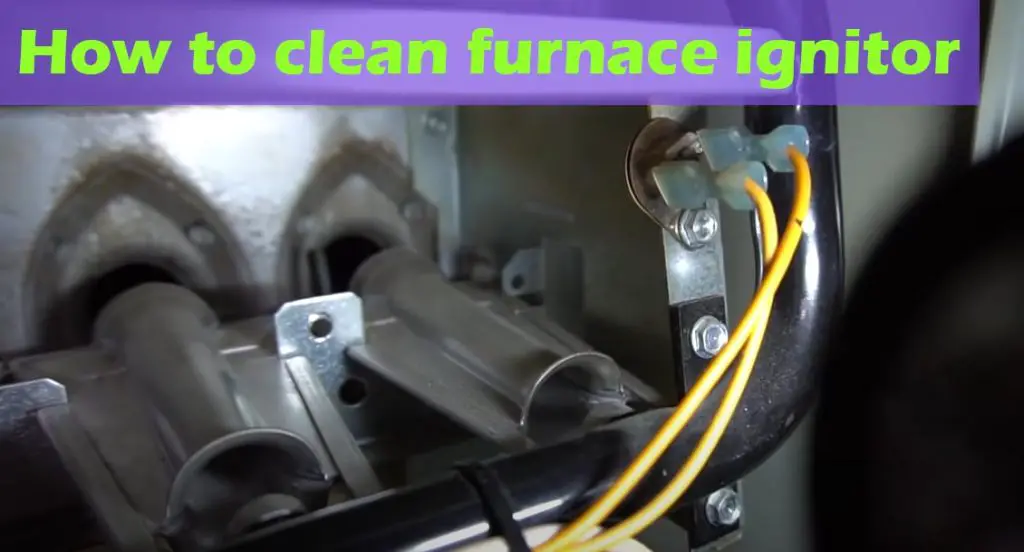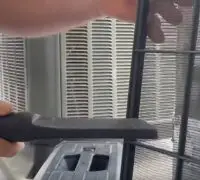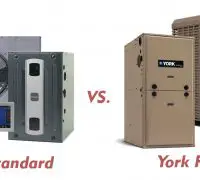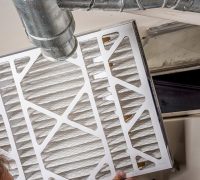Gas furnaces need a system to ignite the gas; otherwise, the combustion process won’t occur. The type of furnace ignitor depends on the age of your furnace, as old models come with traditional pilot lights, whereas new models feature a spark ignitor or a hot surface ignitor.
Page Table of Contents
Why is the furnace ignitor important?
For a very long time, the ignition in furnaces would be made with the standing pilot light. The pilot light would burn all the time with some gas and combustion would happen whenever required. The downside of this system is that the light had to be relit to generate heat when it went outt.
At the end of the 20th century, some manufacturers developed a new ignition system that utilizes a spark ignitor. In the beginning, the spark ignitor would light the pilot light. The furnaces now come with a hot surface ignitor that features a resistive heating element that will warm up and generate combustion.
Where is the ignitor in your furnace?
In most modern furnaces, the burners are located in front and you only need to open the access panel. One end of every four burners is exposed, whereas the other end goes past a metal wall and inside the combustion chamber. Commonly, the ignitor is installed on the wall, close to the first burner, and nearest to the gas valve.
The hot surface ignitor features a white porcelain base and a long metal bar that extends in the first burner’s path. The spark igniter resembles the hot surface ignitor but has a pair of bars and not a single bar, forming the electrodes to generate the spark. Both types of ignitors come with a pair of wires.
If your furnace is old, it has a burner chamber and a blue flame inside. You might quickly notice the flame burning inside the burner chamber; when it’s out, you can follow any of the two thin copper tubes connected to the gas valve to find the pilot.
High-efficiency furnaces present an AFUE (Annual Fuel Utilization Efficiency) of 90 or higher. They typically feature a hot surface ignitor to begin the combustion process. Hot surface ignitors are also typical for many gas furnaces with standard efficiency ratings. If your furnace makes a clicking noise when it starts, it has a spark ignitor.
How to clean the furnace ignitor?
Here’s how you can clean the gas ignitor on your furnace:
Cleaning with compressed air
In time, the burnt carbon deposits will collect on the surface of the ignitors. The material will slow the start-up of the gas furnace and even block the combustion process from happening. You can postpone replacing the ignitor by cleaning it carefully.
Use a can of compressed air to blast the carbon off the ignitor’s surface. This way, you will reduce contact with the ignitor and avoid any damage while cleaning the ignitor. The hot surface ignitor can still work when dirty, but the heating element on the furnace will perform worse than usual. You can use a can of compressed air to clean various electronics in the house; it typically comes with a long plastic applicator tube. It’s an effective method to spread a blast of compressed air on a specific point. You only need to direct the applicator end at the ignitor probe and remove carbon deposits with several blasts.
If your gas furnace comes with a spark ignitor and works discontinually, it might be covered with soot. Use some blasts of compressed air to the ignitor to eliminate soot and make the ignitor work again. If there’s a blocked pilot tube that makes the pilot light burn weakly and even to fail to light, clean the tube with compressed air. Direct the applicator into the pilot light chamber and send fast blasts. Try to light the pilot light and see if there are changes.
How to physically clean a hot surface ignitor
When you don’t get results with the compressed air method, you can physically clean the hot surface ignitor. It would help if you started by shutting off the power supply to the furnace at the primary breaker panel or the wall switch nearby. Disconnect the hot surface ignitor wires, loosen the screws on the device and lift it. It’s a delicate component, so be careful not to break it.
Never touch the element with bare hands because your skin oils will damage the hot surface ignitor. Use an emery cloth or fine steel wool to rub the probe and eliminate the burnt carbon. Put the ignitor back in its place after cleaning it, connect the wires, and turn the furnace back on. Turn on the thermostat to make the ignitor run and start the furnace.






